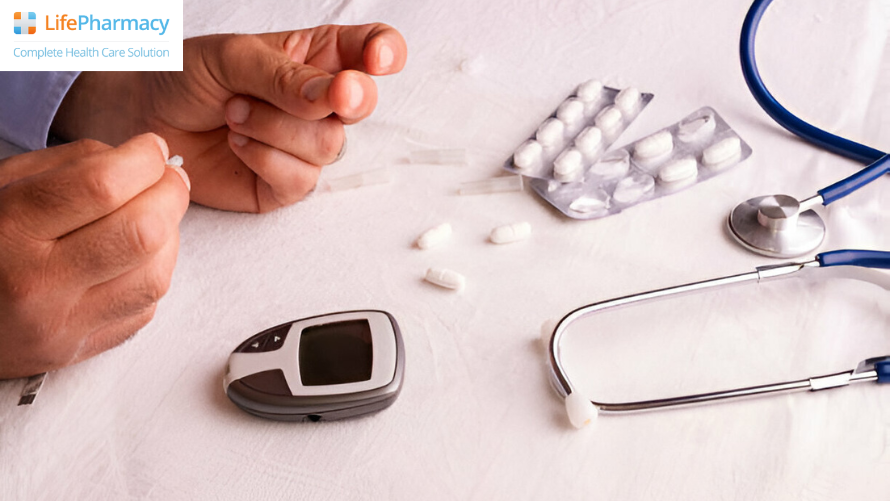This article serves as a reminder that prediabetes is not to be taken lightly. Keep reading to learn about the symptoms, cause, diagnosis and treatment of prediabetes.
Understanding Prediabetes Signs, Risks, and Prevention
What Is Prediabetes?
Prediabetes occurs when blood sugar levels are higher than normal but not yet high enough to be diagnosed as Type 2 diabetes. Typically, healthy blood glucose levels range between 70 and 99 mg/dL, whereas prediabetes is indicated when levels fall between 100 and 125 mg/dL.This condition develops due to insulin resistance, the same underlying issue that leads to Type 2 diabetes.
Insulin, a crucial hormone produced by the pancreas, regulates blood sugar levels by allowing glucose to enter cells for energy. However, when insulin becomes less effective, muscle, fat, and liver cells fail to respond properly. As a result, glucose accumulates in the bloodstream instead of being used for energy. Over time, this persistent rise in blood sugar levels can progress into Type 2 diabetes.
What Are the Symptoms of Prediabetes?
Prediabetes often develops silently, with most individuals experiencing no noticeable symptoms. However, in some cases, subtle warning signs may appear, including:
-
Changes in skin texture: Darkened patches of skin in the armpits, neck, or other body folds (acanthosis nigricans), along with skin tags.
-
Vision disturbances: Blurred or hazy vision due to changes in the eyes.
-
Circulatory issues: Persistent coldness in the hands and feet.
-
Oral discomfort: Increased dryness in the mouth.
-
Urinary symptoms: Frequent urination and recurrent urinary tract infections.
-
Neurological sensations: Tingling, numbness, itching, burning, or even pain, particularly in extreme cases.
-
Skin irritation: Persistent itchiness.
-
Frequent infections: Reduced immunity leading to recurring infections.
-
Mood fluctuations: Feelings of anxiety, nervousness, or irritability.
Since symptoms are often absent or vague, routine health check-ups using diabetes test strips from an online pharmacist is the most reliable way to identify prediabetes early and take preventive action.
What are the Risk Factors for Prediabetes?
Certain factors can increase the likelihood of developing prediabetes, including:
-
Genetic predisposition: A family history of Type 2 diabetes, especially in parents or siblings.
-
Excess weight or obesity: A Body Mass Index (BMI) over 25, particularly with fat accumulation around the abdomen.
-
Sedentary lifestyle: Engaging in physical activity less than three times a week.
-
Age: The risk rises for individuals aged 45 and older.
-
Smoking: A known contributor to insulin resistance and metabolic issues.
-
Sleep disorders and Chronic Stress: Poor sleep quality, chronic stress or conditions like obstructive sleep apnea can impair glucose metabolism.
-
Previous gestational diabetes: A history of diabetes during pregnancy or delivering a baby weighing over 9 pounds.
-
Polycystic ovary syndrome (PCOS): A hormonal disorder in women linked to insulin resistance.
-
Unhealthy cholesterol levels: Low good cholesterol (HDL) levels and high triglycerides (above 250 mg/dL).
-
High blood pressure: Blood pressure consistently measuring above 140/90 mm Hg.
-
Unhealthy diet: Frequent processed foods, refined carbohydrates, and saturated fats intake.
-
Long-term medication use: Prolonged use of certain drugs, such as steroids.
-
Hormonal imbalances: Conditions like hypothyroidism and Cushing’s syndrome can interfere with insulin function.
Additionally, race and ethnicity can play a role, with higher risk observed in Black, Hispanic/Latino, Native American, Pacific Islander, and Asian American populations. Factors, such as age and genetics, cannot be changed, while physical activity, diet, and smoking can be modified to lower the risk of developing prediabetes.
What Complications Can Prediabetes Cause?

The most significant risk associated with prediabetes is its progression to Type 2 diabetes, which, if left unmanaged, can lead to severe health complications. These include:
Cardiovascular Disease
Individuals with prediabetes face a 15% higher risk of developing heart disease compared to those with normal blood sugar levels. Experts recommend that people with prediabetes aim for an LDL cholesterol level below 100 mg/dL, with an optimal target of 70 mg/dL or lower. Maintaining blood pressure closer to 120/80 mmHg, rather than the standard 140/90 mmHg, can help reduce cardiovascular risks.
Chronic Kidney Disease (CKD)
Prediabetes places added stress on the kidneys, which work to filter excess glucose from the blood. Over time, this strain can lead to kidney damage, increasing the likelihood of developing CKD.
Fatty Liver Disease
It is also known as metabolic dysfunction-associated steatotic liver disease. Insulin resistance further hampers the liver’s ability to process and break down fats, accumulating fat and potentially damaging the liver.
Other potential complications of prediabetes include:
-
Diabetes-related retinopathy: Damage to the blood vessels in the eyes can lead to vision impairment.
-
Diabetes-related neuropathy: Nerve damage that can cause pain, tingling, or numbness in the extremities. Since diabetes-related neuropathy can cause numbness in the feet, proper foot care is essential.
How is Prediabetes Diagnosed?
Healthcare professionals use routine blood tests to detect prediabetes, particularly if you have risk factors that increase your chances of developing the condition.
The following tests help diagnose prediabetes:
Fasting Plasma Glucose (FPG) Test:
This test measures blood sugar levels after fasting (no food or drink except water) for at least eight hours. It is often included in basic or comprehensive metabolic panels to assess overall health.
A1C Test
Evaluates average blood sugar levels over the past two to three months.
Prediabetes is diagnosed if the test results are:
-
FPG Test Results:
-
Normal: 70–99 mg/dL
-
Prediabetes: 100–125 mg/dL
-
Diabetes: 126 mg/dL or higher
-
A1C Test Results:
-
Normal: Below 5.7%
-
Prediabetes: 5.7%–6.4%
-
Diabetes: 6.5% or higher
People at risk can also use diabetic test strips to monitor blood glucose levels. These strips are a convenient way to check sugar levels at home.
Looking for the right support to manage prediabetes effectively?
Discover top-quality supplements, medications, and health essentials at Life Pharmacy.
How Can You Prevent Prediabetes?
Making lifestyle changes is one of the most effective ways to manage blood sugar levels and prevent or delay Type 2 diabetes.
Weight Loss
If you are overweight or obese, shedding 5% to 10% of your current body weight can significantly improve blood pressure, cholesterol levels, and insulin sensitivity. Weight loss is also a key strategy in managing fatty liver disease.
Regular Exercise
Physical activity is essential for everyone, whether or not they have prediabetes. To manage blood sugar levels, engage in at least 150 minutes of moderate-intensity exercise weekly.
Swimming, cycling, or brisk walking can also help manage prediabetes symptoms. Combining aerobic and resistance exercises enhances blood sugar control, lowers cardiovascular risks, and promotes a healthier liver.
Healthy Diet
The food you eat plays a vital role in prediabetes prevention. Reduce your intake of processed foods, fried foods, bread, pasta, rice, potatoes, and sugary beverages, as they cause rapid spikes and drops in blood sugar. Instead, choose complex carbohydrates from whole grains, beans, lentils, and green peas.
Increase fiber-rich foods, as fiber slows digestion, keeps you full for longer, and smooths out glucose absorption to prevent blood sugar spikes. Additionally, incorporate vegetables, fruits, lean proteins like fish and chicken, and low-fat dairy into your diet. Maintain portion control to reduce calorie intake. Drinking plenty of water can also aid in maintaining stable blood sugar levels.
Consulting a dietitian specializing in prediabetes and diabetes management can help create a personalized meal plan.
Do Medications Help in Treating Prediabetes?
While many people turn to medications to accelerate the reversal of prediabetes, prioritizing a healthy lifestyle is always recommended. However, in cases where lifestyle changes alone are insufficient, especially for individuals at high risk of developing diabetes doctors may prescribe medications.
The most commonly prescribed medications for prediabetes include metformin and acarbose, both of which work to regulate blood sugar levels and reduce the risk of progression to diabetes.
If you need to buy medication online, ensure you use a trusted source to get the right treatment.
Take Charge of Prediabetes with a Trusted Online Pharmacist in UK

When it comes to prediabetes, staying informed and making healthy changes can make all the difference. While the journey may not always be easy, every small step toward better health counts.
Regular check-ups with your healthcare provider ensure you stay on track, and even if challenges arise, progress matters more than perfection.
At Life Pharmacy, we’re here to support you with expert advice, essential health products, and trusted medicine online UK to help you manage your health effectively. Take charge today for a healthier tomorrow!






